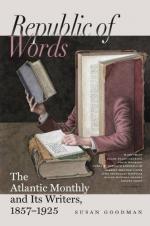We cannot speak for England, but certainly no one can visit Canada without being struck with the spectacle of a more athletic race of people than our own. On every side one sees rosy female faces and noble manly figures. In the shop-windows, in winter weather, hang snow-shoes, “gentlemen’s and ladies’ sizes.” The street-corners inform you that the members of the “Curling Club” are to meet to-day at “Dolly’s,” and the “Montreal Fox-hounds” at St. Lawrence Hall to-morrow. And next day comes off the annual steeple-chase, at the “Mile-End Course,” ridden by gentlemen of the city with their own horses; a scene, by the way, whose exciting interest can scarcely be conceived by those accustomed only to “trials of speed” at agricultural exhibitions. Everything indicates out-door habits and athletic constitutions.
We are aware that we may be met with the distinction between a good idle constitution and a good working constitution,—the latter of which often belongs to persons who make no show of physical powers. But this only means that there are different temperaments and types of physical organization, while, within the limits of each, the distinction between a healthy and a diseased condition still holds; and we insist on that alone.
Still more specious is the claim of the Fourth-of-July orators, that, health or no health, it is the sallow Americans, and not the robust English, who are really leading the world. But this, again, is a question of temperaments. The Englishman concedes the greater intensity, but prefers a more solid and permanent power. It is the noble masonry and vast canals of Montreal, against the Aladdin’s palaces of Chicago. “I observe,” admits the Englishman, “that an American can accomplish more, at a single effort, than any other man on earth; but I also observe that he exhausts himself in the achievement. Kane, a delicate invalid, astounds the world by his two Arctic winters,—and then dies in tropical Cuba.” The solution is simple; nervous energy is grand, and so is muscular power; combine the two, and you move the world.
We shall assume, as admitted, therefore, the deficiency of physical health in America, and the need of a great amendment. But into the general question of cause and cure we do not propose to enter. In view of the vast variety of special theories, and the inadequacy of any one, (or any dozen,) we shall forbear. To our thinking, the best diagnosis of the universal American disease is to be found in Andral’s famous description of the cholera: “Anatomical characteristics, insufficient;—cause, mysterious;—nature, hypothetical;—symptoms, characteristic;—diagnosis, easy;—treatment, very doubtful.”




